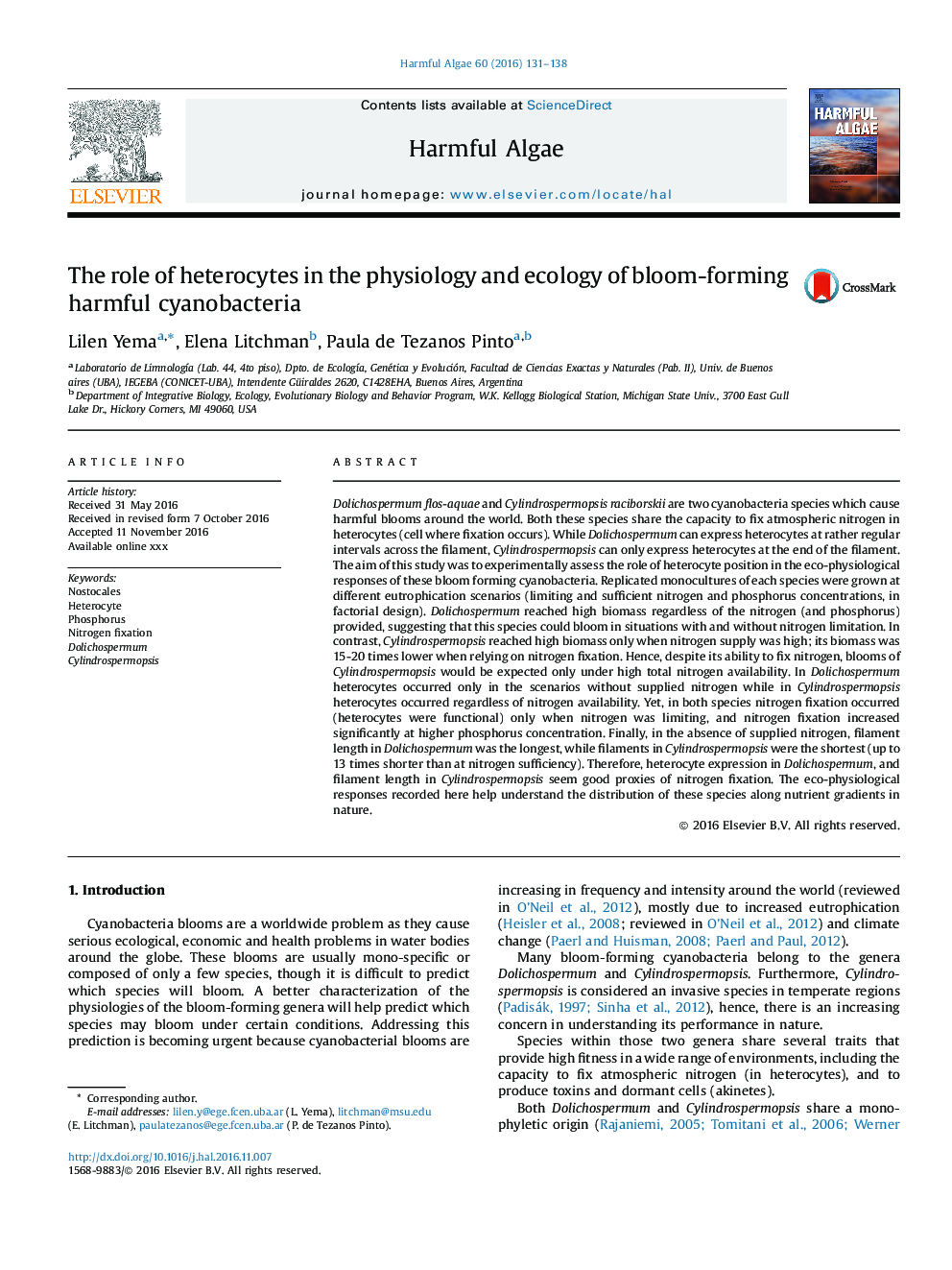| کد مقاله | کد نشریه | سال انتشار | مقاله انگلیسی | نسخه تمام متن |
|---|---|---|---|---|
| 8885760 | 1626912 | 2016 | 8 صفحه PDF | دانلود رایگان |
عنوان انگلیسی مقاله ISI
The role of heterocytes in the physiology and ecology of bloom-forming harmful cyanobacteria
ترجمه فارسی عنوان
نقش هتروسیت ها در فیزیولوژی و زیست شناسی سینو باکتری های مضر شکوفا می شود
دانلود مقاله + سفارش ترجمه
دانلود مقاله ISI انگلیسی
رایگان برای ایرانیان
کلمات کلیدی
موضوعات مرتبط
علوم زیستی و بیوفناوری
علوم کشاورزی و بیولوژیک
علوم آبزیان
چکیده انگلیسی
Dolichospermum flos-aquae and Cylindrospermopsis raciborskii are two cyanobacteria species which cause harmful blooms around the world. Both these species share the capacity to fix atmospheric nitrogen in heterocytes (cell where fixation occurs). While Dolichospermum can express heterocytes at rather regular intervals across the filament, Cylindrospermopsis can only express heterocytes at the end of the filament. The aim of this study was to experimentally assess the role of heterocyte position in the eco-physiological responses of these bloom forming cyanobacteria. Replicated monocultures of each species were grown at different eutrophication scenarios (limiting and sufficient nitrogen and phosphorus concentrations, in factorial design). Dolichospermum reached high biomass regardless of the nitrogen (and phosphorus) provided, suggesting that this species could bloom in situations with and without nitrogen limitation. In contrast, Cylindrospermopsis reached high biomass only when nitrogen supply was high; its biomass was 15-20 times lower when relying on nitrogen fixation. Hence, despite its ability to fix nitrogen, blooms of Cylindrospermopsis would be expected only under high total nitrogen availability. In Dolichospermum heterocytes occurred only in the scenarios without supplied nitrogen while in Cylindrospermopsis heterocytes occurred regardless of nitrogen availability. Yet, in both species nitrogen fixation occurred (heterocytes were functional) only when nitrogen was limiting, and nitrogen fixation increased significantly at higher phosphorus concentration. Finally, in the absence of supplied nitrogen, filament length in Dolichospermum was the longest, while filaments in Cylindrospermopsis were the shortest (up to 13 times shorter than at nitrogen sufficiency). Therefore, heterocyte expression in Dolichospermum, and filament length in Cylindrospermopsis seem good proxies of nitrogen fixation. The eco-physiological responses recorded here help understand the distribution of these species along nutrient gradients in nature.
ناشر
Database: Elsevier - ScienceDirect (ساینس دایرکت)
Journal: Harmful Algae - Volume 60, December 2016, Pages 131-138
Journal: Harmful Algae - Volume 60, December 2016, Pages 131-138
نویسندگان
Lilen Yema, Elena Litchman, Paula de Tezanos Pinto,
